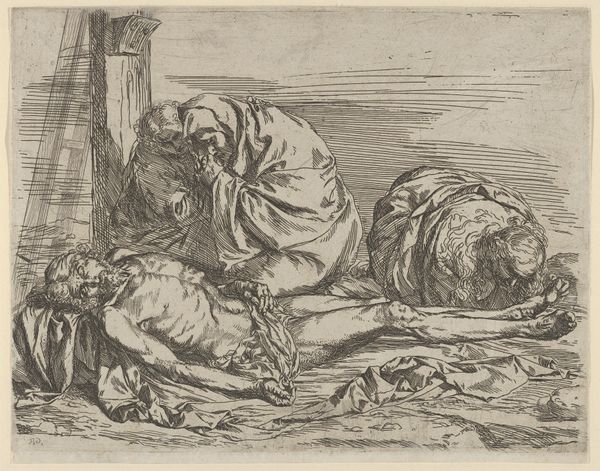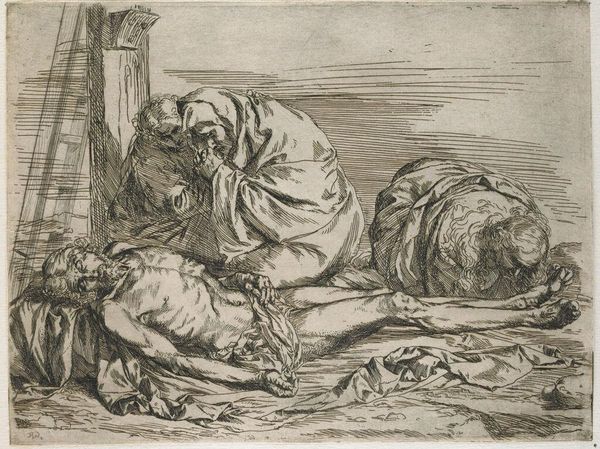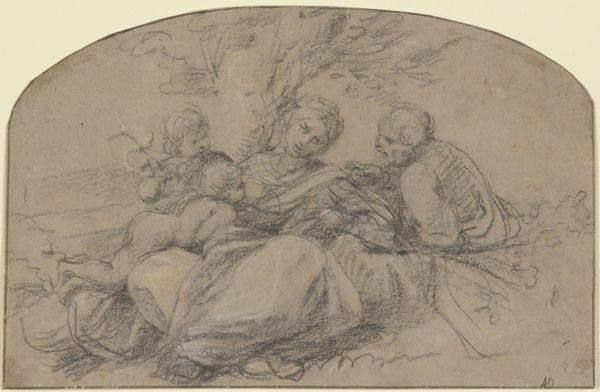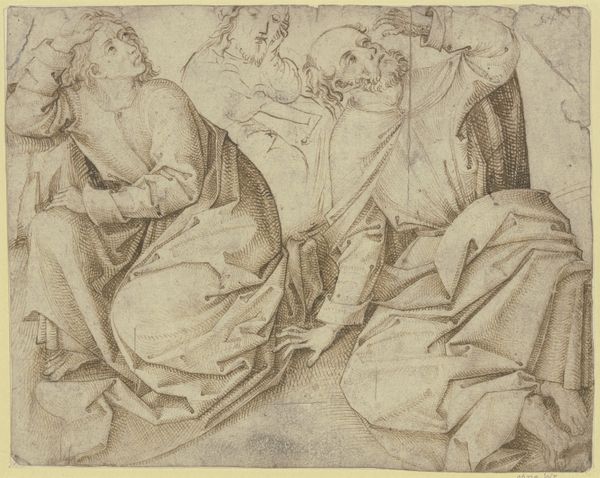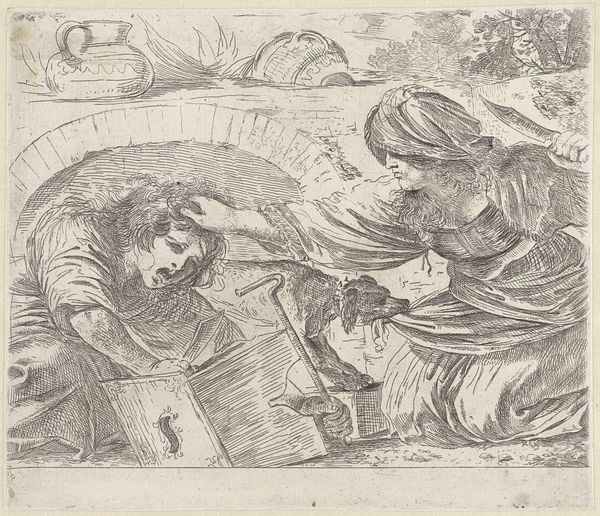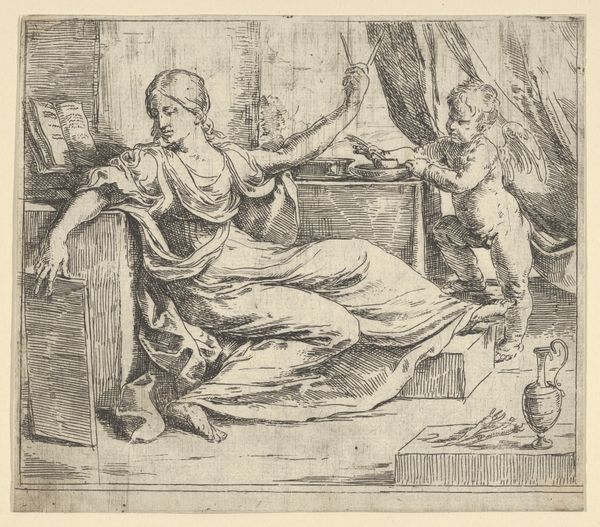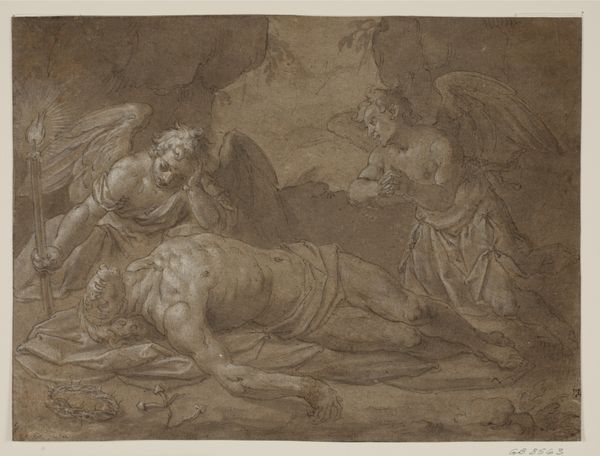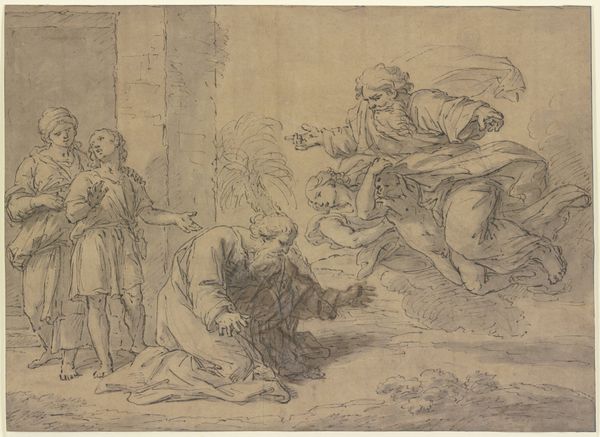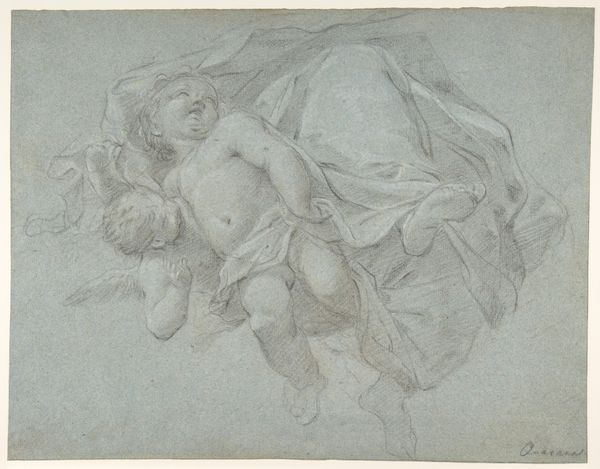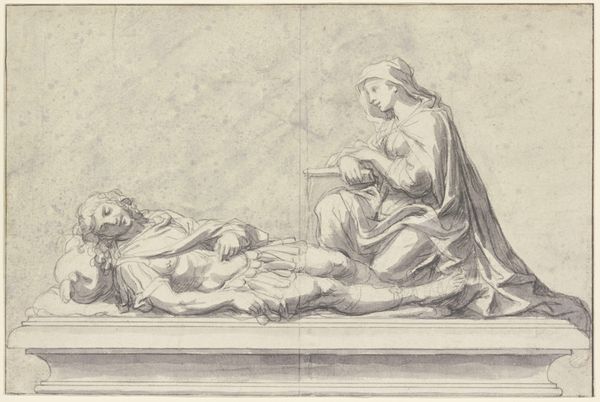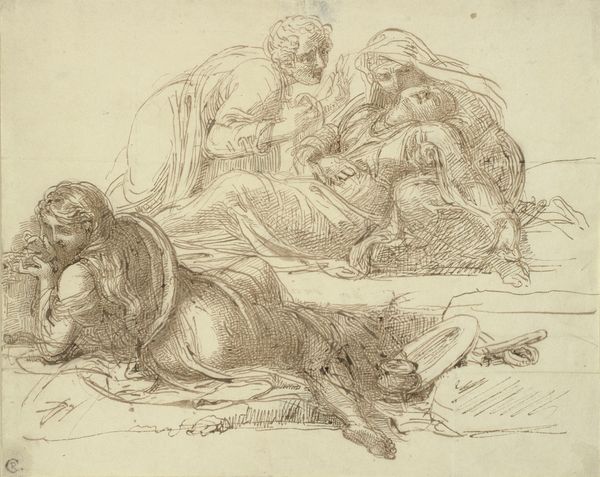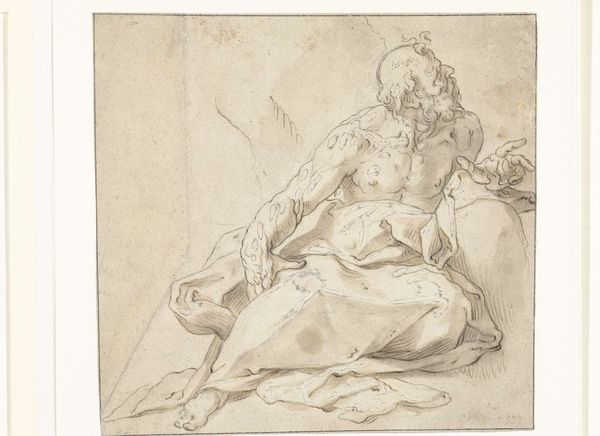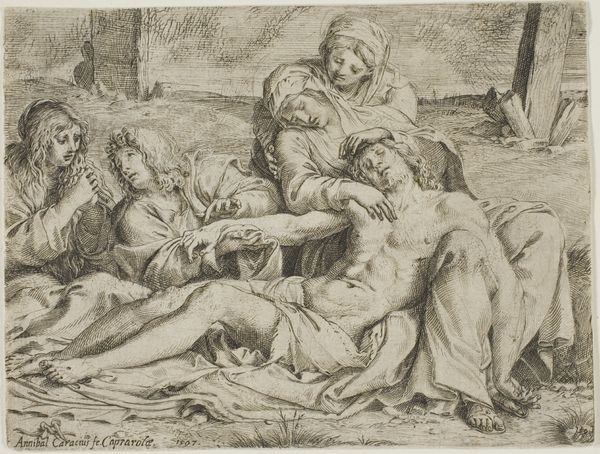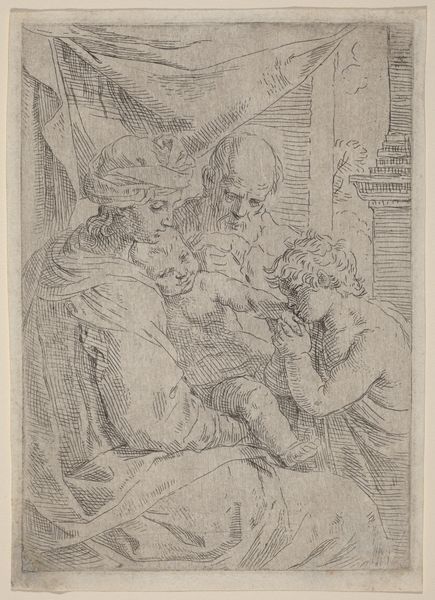
The Virgin, Saint John the Baptist, and Mary Magdalen weeping over Christ's dead body 1624
0:00
0:00
ink, engraving
#
ink drawing
#
narrative-art
#
baroque
#
pen sketch
#
figuration
#
ink
#
history-painting
#
engraving
#
virgin-mary
Dimensions: Sheet: 7 11/16 × 10 3/16 in. (19.5 × 25.8 cm)
Copyright: Public Domain
Art Historian: This delicate pen sketch is entitled "The Virgin, Saint John the Baptist, and Mary Magdalen weeping over Christ's dead body" by Jusepe de Ribera, dating back to 1624. It resides at the Metropolitan Museum of Art. Curator: Wow, the immediate impression is one of intense grief and vulnerability, but rendered with such fragile lines. It almost looks like an unfinished engraving. It's surprising the artist opted for a pen and ink rather than richer material for this potent image. Art Historian: Indeed. The choice of ink is poignant, a seemingly simple material to depict a profoundly complex and symbolic moment. We see three figures, each representing core facets of sorrow— the Virgin Mother's unbearable loss, Mary Magdalene's repentance, and John the Baptist's prophetic mourning. Curator: I am more concerned with how this drawing served his larger studio practice. Do we know if this preliminary study informed a more elaborate altarpiece, perhaps exploring various figural arrangements and the handling of drapery, to determine its translation into painting? Art Historian: It could very well have been. Ribera was deeply embedded in the Neapolitan devotion and response to religious works like these would dictate future iterations. Think about the raw emotion of loss, passed down through centuries of visual representation, almost like a roadmap for conveying faith through artistry. Curator: But doesn’t focusing solely on the spiritual meaning erase the skill required to translate human suffering onto paper? I am keen to know who prepared the paper. I am intrigued by what particular pen and ink Ribera selected to execute the scene. There are many hands involved to complete even such intimate art. Art Historian: I don't deny the labor, I simply appreciate that those technical means support the narrative: of lament, sacred loss, and devotion. Ribera captures grief with an immediacy that still resonates today, linking us to shared experiences through these carefully chosen visual tropes. Curator: I concede. The artist's material decisions support the emotional tenor, allowing access to universal feelings regarding mortality. In thinking of its execution I see those very real sentiments come alive. Art Historian: Precisely, even the subtlest of visual forms holds such a potent and lasting imprint of feeling.
Comments
No comments
Be the first to comment and join the conversation on the ultimate creative platform.
